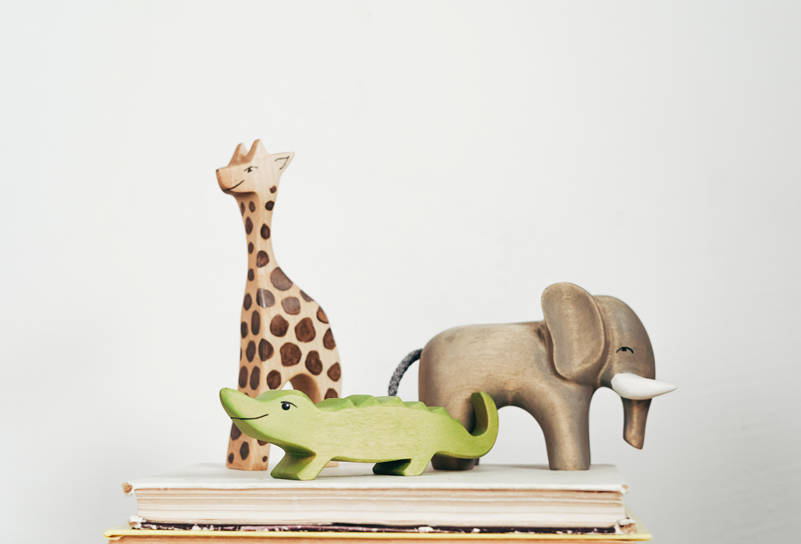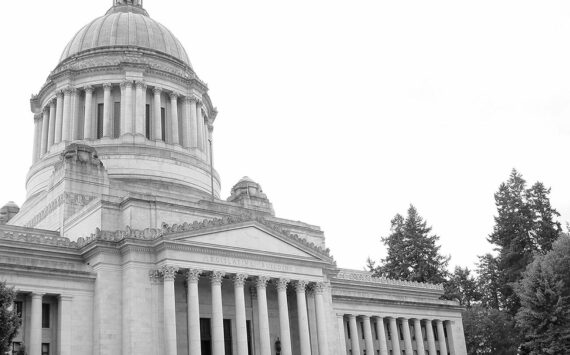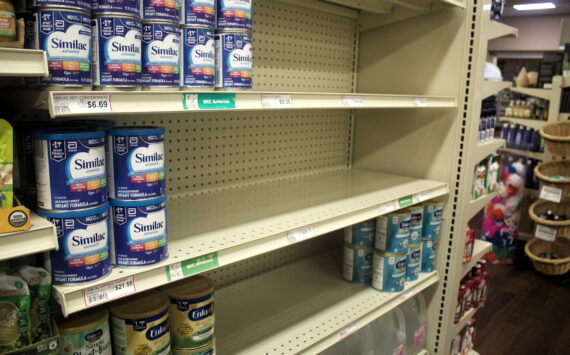By Morf Morford
Tacoma Daily Index
Anyone remember Toys “R” Us?
Like some other retail phantoms, Toys “R” Us was once the top of the food chain for children’s toys.
It was the store that seemed to have everything – and was every kid’s dream store.
In fact, when my daughter was about eight, we asked her what she most wanted for Christmas.
Never one to think small, she thought for a moment and replied, “I want the Toys “R” Us store!”
Not getting it was just another one of life’s disappointments – though she probably forgot it by the time Christmas rolled around.
Time was just as unkind to the Toys “R” Us chain.
At its peak, the chain held 1,500 stores globally, including 900 in the U.S.
And, as you might remember, these stores were not small – or cheap.
But they had every conceivable toy – and many far beyond imagining. And the prices were competitive – or even lower.
But then, like a ghost from Christmas Past, debt emerged and swallowed the whole chain – and damaged a whole range of investors, banks and vendors.
Not very happy former employees started a Facebook page with a most apropos name; Dead Giraffe Society.
You can see the details on the whole sordid implosion here – https://getpocket.com/explore/item/tears-r-us-the-world-s-biggest-toy-store-didn-t-have-to-die?.
As you might expect, for their part in one of the biggest unravellings in U.S. retail history, lawyers and advisers received more than $100 million; they expect to get about a quarter of a billion dollars more before it’s all over. No discounts here, even the demise of Toys “R” Us is expensive.
I bring up this story because it is yet another example of what seemed to be a permanent feature of our local, national even global retail landscape.
I hope we can learn something from the implosion of Toys “R” Us.
A player on the scale of Toys “R” Us has different dynamics and certainly more challenges compared to a smaller business.
The ripples might not go as far, but the demise of much smaller businesses have their own sinking spiral of debt, recrimination and questionable legacy.
Estimates are that roughly 110,000 small businesses permanently closed in just the first two months of the COVID-19 pandemic, but it could take up to a year before we’ll know the true economic toll.
Many closed since then, of course, with repercussions that will be with us far longer than a single year.
Every business starts small, even Toys “R” Us started with one store (outside of Washington D.C.) in 1957, then opened another and another, until by the mid-1980s there were more than 200 across the country.
But growth is not infinite (though you’d think that toys would always sell, and they probably do) and the whipsaws of the economy, marketing and mediocre to terrible management (not to mention a few strategic multi-million dollar lawsuits or corporate golden parachutes) can do lasting damage to any business model – and many an unfortunate neighborhood.
Remember the old saying “The best way to make a small fortune in [insert industry of choice here] is to start with a large one”?
Debt, or at least financial jeopardy, is hard-wired into any economic venture – large or small – or even starting small and getting larger.
Larger businesses, so the proverb goes, only have more zeroes – both positive and negative.
Debt, literally the act of going backwards financially, is a hazard on any scale. From nation-states to individual households, the barely noticeable slide into irrecoverable debt can be the death knell not only of a business, but also relationships, even the health and solvency of a community.
A business, any business, is more than a means to a livelihood, it is an answer to a problem, a good or service that meets a need.
The death of a business is the end of a promise, the closing of a venture, a set of ideas taking shape in a practical way in a community – and maybe even far beyond.
That community of customers used to be one’s neighbors or those living nearby.
Now, of course, customers could be anywhere – or anyone.
I love the idea of local business, but sometimes, or in some specialty areas, customers may not be close by – or even in any given place.
The village country store is a wonderful image, but our economy, and our technology allow, maybe even demand, a whole other set of skills, strategies and precautions.
But debt, in traditional settings, high or low tech, in businesses large or small is still the biggest threat.
Debt quietly, slowly and relentlessly accumulates. (If you’d like to see a map of debt, to the point of collections across America look here – https://apps.urban.org/features/debt-interactive-map/?type=overall&variable=pct_debt_collections), This chart, by the way, was before the onset of COVID.
An updated version, even more sobering I am sure, will not be available for some time.
But the principle and threat of debt never lets up.
Few things are more American it seems, than debt.
Consumer debt was approaching $14-trillion after the second quarter of 2019, according to the New York Federal Reserve. It was the 20th consecutive quarter for an increase.
And those were the good times.
You could make the argument that debt is just another word for credit. And credit, to a large degree, is based on an assumption that the future looks more promising than the present.
We generally see growth in four main areas of debt — home, auto, student loans and credit cards.
Total home mortgage debt rose to $9.4-trillion, an increase of $407-billion from the same point in 2017.
But this increase is a good thing overall. The rise of mortgage debt is an indication of recovery and faith in the housing market. Household debt has been growing for five years, but mortgage balance growth has been on a slower incline since it stopped declining in 2013.
Auto loans increased in 2019, but as 2020 unfolded, auto sales, and loans slowed dramatically.
Student loans continued to escalate, growing to a record $1.48-trillion in Q2 of 2019, up $73-billion from the same time in 2018.
When the federal government assumed control of the student-loan program in 2010, replacing previous administrator Sallie Mae, costs were cut and the availability of education assistance was increased. The loans are guaranteed and it’s seemingly a win-win — lower interest rates to encourage higher education — although the rise of student-loan debt has been staggering – to the point of suffocation for many.
Credit-card loans crossed the $1 trillion mark, reaching $1.08-trillion in Q3 of 2019. Credit-card debt, considered revolving debt because it’s meant to be paid off each month, is only 26.2% of the total debt (after accounting for 38% of the total debt in 2008).
A key principle of starting a business is to have a year’s worth of savings to make it through the first year.
That might be a good policy for all of us to help us make it through challenging times.





